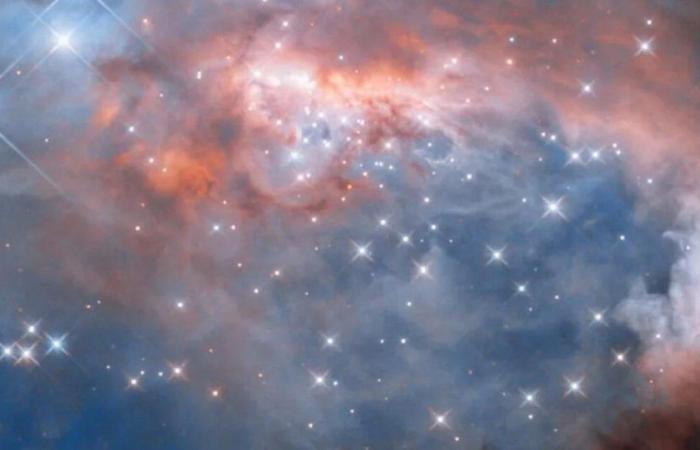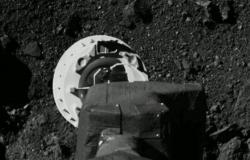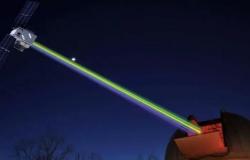
RCW 7, the nebula that houses child stars. Photo: NASA/ESA
The law of the universe. The Hubble space telescope, a project of NASA and the European Space Agency (ESA), has given us a wonderful image of child stars that are clearing the RCW 7 nebulafrom the constellation of Puppis.
Through a statement, NASA assured that, within a few million years, radiation and stellar winds will disperse the gas in the nebula. The remaining dust and material will spread throughout the galaxy to begin another process of life in space.
NASA Hubble Telescope Photographs Child Stars
The Hubble Space Telescope, from NASA and the European Space Agency (ESA), has captured a stunning image of the RCW 7 nebula, a wonderful mixture of gas and dust located more than 5,300 light years from the Land in the Puppis constellation or The Popa.
This constellation represents the stern of the legendary ship Argo, on which Jason and the Argonauts sailed in search of the Golden Fleece. Puppis was part of the vast ancient constellation Argo Navis, which was divided into smaller constellations: Carina (the keel) , Vela (the sails) and Puppis (the stern).
Nebulae like RCW 7 are essential for the formation of new stars, the US space agency reports in a statement. Under the influence of gravity, molecular clouds collapse and form protostars, which are young stars surrounded by disks of gas and dust.
The protostars in RCW 7 are particularly massive and emit strong ionizing radiation and stellar winds, transforming the nebula into a region called H II.
Complete photograph of the RCW 7 nebula taken by the Hubble telescope. Photo: NASA/ESA
The H II regions are filled with hydrogen ions, where this element has lost its electron. Ultraviolet radiation from protostars in RCW 7 excites hydrogen. As a result, the nebula emits a soft, pink light.
The data of the Hubble space telescope They come from the study of a massive protostellar binary system called IRAS 07299-1651, which is still enveloped in its gas cocoon. Astronomers used Hubble’s Wide Field Camera 3 in near-infrared light to observe this system on Earth.
Stars are best seen in infrared light
Although protostars emit a lot of ultraviolet light, they are also bright in infrared light, which can pass through gas and dust, allowing Hubble to capture these images. Many of the stars visible in the image are not part of the nebula, but lie between it and our solar system.
The creation of an H II region like RCW 7 marks the beginning of the end of a molecular cloud. In a few million years, Radiation and stellar winds will disperse gas from the nebula, a process accelerated by the supernova explosions of the most massive stars. The new stars formed in the nebula will use only a fraction of the available gas, while the rest will spread throughout the galaxy, eventually forming new molecular clouds, NASA explained.
Main stars that make up the Puppis constellation in the southern hemisphere. Photo: Starwalk Space
What is a nebula?
Nebulae are the factories where stars like the sun are born. Within a nebula, gravity can cause gas and dust to accumulate in dense regions. If one of these regions is dense enough, it can collapse under its own gravity, forming a protostar.
They are composed mainly of hydrogen, the most abundant element in the universe, followed by helium. They also contain smaller amounts of other elements such as oxygen, carbon and nitrogen.
This is how the Manta Ray Nebula turns off over 20 years. Photo: NASA/Hubble
Nebulae can be seen at different wavelengths of the electromagnetic spectrum, from radio to visible and ultraviolet. Space telescopes such as Hubble have provided spectacular and detailed images of various nebulae, revealing their complex structure and dynamics.
The James Webb Space Telescope, a specialist in the infrared spectrum
The James Webb Space Telescope (JWST) operates primarily in the infrared range, allowing it to observe the universe in ways not possible in visible or ultraviolet light.
Many objects in the universe, such as brown dwarfs, planets, and protoplanetary disks, emit their presence primarily in the infrared due to their relatively low temperatures. The Webb can detect and study them in great detail.
Infrared is ideal for detecting spectral signatures of various molecules and chemical compounds. This includes water, carbon dioxide, methane and othersboth in exoplanet atmospheres and in star-forming regions and galaxies.
Equipped with instruments such as the Near Infrared Camera (NIRCam), the Near Infrared Spectrograph (NIRSpec), and the Mid Infrared Instrument (MIRI), the James Webb telescope can make detailed observations over a wide range of the infrared spectrum.





